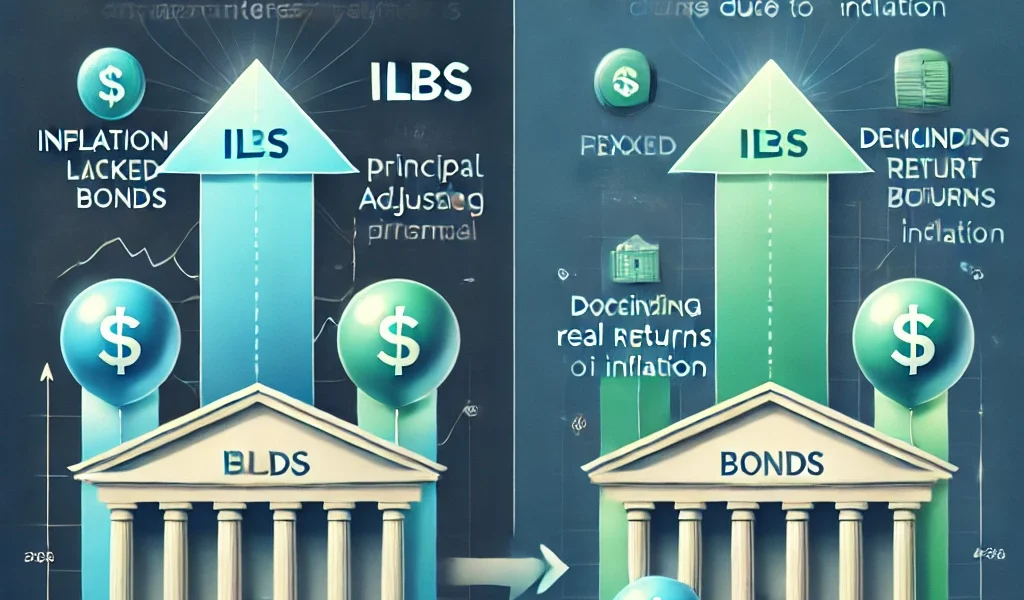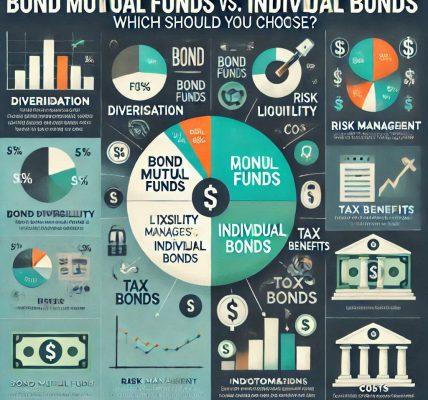In an era of unpredictable inflation and fluctuating interest rates, protecting investment portfolios from the eroding effects of rising prices is essential. Inflation-linked bonds (ILBs), also known as inflation-protected securities, offer investors a powerful hedge against inflation by adjusting their principal value and interest payments in response to inflation changes.
This detailed guide explores the mechanics of inflation-linked bonds, their advantages and disadvantages, and how investors can incorporate them into their portfolios to preserve purchasing power and mitigate inflation risk.
🎯 Understanding Inflation-Linked Bonds (ILBs)
💡 What Are Inflation-Linked Bonds?
Inflation-linked bonds (ILBs) are a type of fixed-income security where the principal and interest payments are indexed to inflation. As inflation rises, the bond’s principal value increases, resulting in higher interest payments. Conversely, if deflation occurs, the bond’s principal value decreases, reducing interest payments.
These bonds ensure that investors maintain the real value of their investments by keeping pace with inflation.
📊 How Do Inflation-Linked Bonds Work?
- Principal Adjustment: The bond’s face value is adjusted periodically based on the inflation rate, typically measured by the Consumer Price Index (CPI).
- Interest Payments: Coupon payments are calculated as a fixed percentage of the adjusted principal. As the principal increases with inflation, the interest payments also increase.
📝 Example:
- You invest ₹10,000 in an inflation-linked bond with a coupon rate of 3%.
- If inflation rises by 5%, the principal is adjusted to ₹10,500.
- The interest payment becomes 3% of ₹10,500, resulting in a higher payout.
📈 Types of Inflation-Linked Bonds
1️⃣ Treasury Inflation-Protected Securities (TIPS)
- Issued by the U.S. government.
- Principal value and interest payments increase with inflation.
- Ideal for conservative investors seeking low-risk inflation protection.
2️⃣ Government Inflation-Linked Bonds
- Issued by various governments globally, including India’s Inflation-Indexed Bonds (IIBs).
- Provide inflation protection while ensuring sovereign-backed security.
3️⃣ Corporate Inflation-Linked Bonds
- Issued by corporations seeking to raise capital while offering inflation-adjusted returns.
- Higher risk than government-backed ILBs but may offer better yields.
🔥 Why Should Investors Consider Inflation-Linked Bonds?
🛡️ 1. Protection Against Inflation
Inflation-linked bonds adjust their principal and interest payments to keep pace with inflation, preserving the purchasing power of the invested capital.
📊 2. Predictable Income with Inflation-Adjusted Returns
Unlike traditional fixed-income securities that lose value in inflationary environments, ILBs provide consistent returns that are adjusted based on inflation indices.
🔄 3. Diversification for a Balanced Portfolio
Inflation-linked bonds add a layer of diversification to a bond portfolio, reducing overall volatility and risk.
📉 4. Capital Preservation During Economic Uncertainty
In periods of rising inflation or economic uncertainty, inflation-linked bonds safeguard the real value of an investor’s capital.
❗ Risks and Disadvantages of Inflation-Linked Bonds
📉 1. Deflation Risk
If deflation occurs, the principal value of ILBs may decrease, resulting in lower interest payments.
💸 2. Lower Yields Compared to Traditional Bonds
Inflation-linked bonds often offer lower initial yields than conventional bonds because of their inflation protection feature.
⏳ 3. Longer Duration Risk
ILBs generally have longer durations, making them more sensitive to interest rate fluctuations.
⚖️ 4. Taxation Complexity
In some jurisdictions, the inflation adjustment is taxed as income, which can reduce the overall return for investors.
🔍 How Inflation-Linked Bonds Compare to Traditional Bonds
| Feature | Inflation-Linked Bonds | Traditional Bonds |
|---|---|---|
| Principal Adjustment | Adjusted for inflation | Fixed throughout the term |
| Interest Payments | Increase with inflation | Fixed coupon payments |
| Inflation Protection | Provides protection | No inflation adjustment |
| Yield | Typically lower | Typically higher |
| Risk Exposure | Lower risk in inflationary environments | Higher risk from inflation |
📊 How to Invest in Inflation-Linked Bonds
✅ 1. Purchase Directly from the Government
Investors can buy inflation-linked bonds such as TIPS (Treasury Inflation-Protected Securities) or India’s Inflation-Indexed Bonds (IIBs) directly through government bond auctions or financial intermediaries.
✅ 2. Invest in Inflation-Linked Bond Mutual Funds or ETFs
Mutual funds and exchange-traded funds (ETFs) specializing in ILBs provide a diversified approach to investing in inflation-protected securities.
✅ 3. Diversify Through Corporate Inflation-Linked Bonds
For higher returns, investors may consider corporate inflation-linked bonds that provide inflation protection while offering better yields than government bonds.
📝 Factors to Consider Before Investing in Inflation-Linked Bonds
📈 1. Inflation Outlook
Consider the expected trajectory of inflation before investing. ILBs perform well in high-inflation environments but may underperform in deflationary periods.
💡 2. Investment Horizon
Inflation-linked bonds are best suited for long-term investors seeking inflation protection and capital preservation.
⚖️ 3. Tax Implications
Understand the tax treatment of inflation adjustments and interest payments before investing, as tax treatment can significantly impact net returns.
📊 4. Liquidity Considerations
While government-issued ILBs have high liquidity, corporate inflation-linked bonds may be less liquid, affecting their resale value.
🛡️ Strategies to Maximize Returns with Inflation-Linked Bonds
📊 1. Use ILBs to Hedge Against Inflation
Allocate a portion of your fixed-income portfolio to ILBs to protect against inflation risk.
🔄 2. Build a Bond Ladder with ILBs
Stagger the maturities of ILBs to ensure consistent cash flow while taking advantage of inflation adjustments over time.
✅ 3. Combine ILBs with Conventional Bonds
A balanced approach combining ILBs with traditional bonds can optimize returns while minimizing overall portfolio risk.
📉 4. Monitor Inflation Trends Regularly
Stay informed about inflation trends and adjust your bond allocation based on expected changes in inflation rates.
⚖️ Legal Considerations for Inflation-Linked Bond Investments
⚠️ 1. Avoid Giving Personalized Investment Advice
All content should be framed as educational and general information, avoiding specific recommendations or personalized advice.
⚠️ 2. Disclose Risks and Limitations
Clearly state that bond prices and yields are subject to market fluctuations and that inflation-linked bonds may not outperform traditional bonds in all environments.
⚠️ 3. Encourage Due Diligence
Encourage readers to conduct thorough research or consult with financial advisors before making investment decisions.
📊 Summary: Key Takeaways
- Inflation-linked bonds protect against inflation by adjusting principal and interest payments in response to changes in inflation.
- They offer predictable income, preserve capital, and provide portfolio diversification.
- Investors should consider inflation trends, tax implications, and liquidity before investing in ILBs.
- A well-balanced portfolio may include a mix of inflation-linked and traditional bonds to optimize returns and mitigate risks.
By incorporating inflation-linked bonds into their portfolios, investors can safeguard their purchasing power and ensure financial stability in inflationary environments.
🎯 Final Thoughts
By understanding and incorporating inflation-linked bonds into their portfolios, investors can safeguard against inflation risks and ensure their capital retains its purchasing power over time.
Would you like me to create another detailed blog or generate more visuals for your website? 😊



